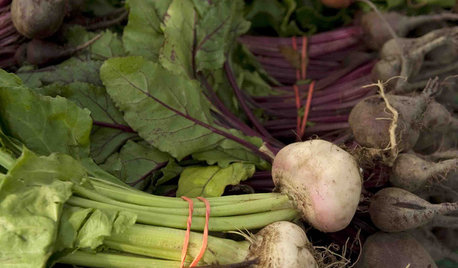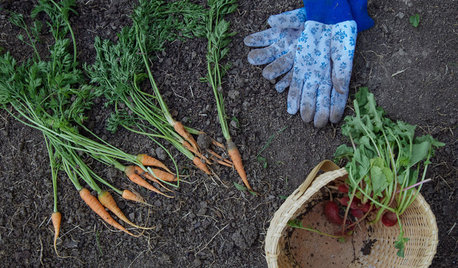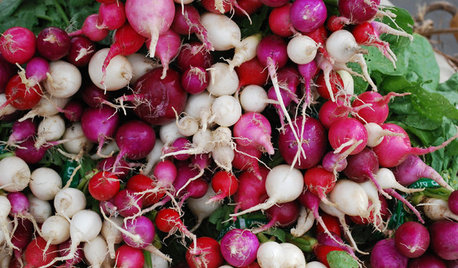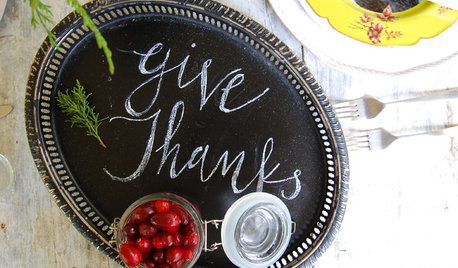carrots & beets in Oklahoma
Macmex
16 years ago
Related Stories

FARM YOUR YARDCool-Season Vegetables: How to Grow Beets
Give canned versions of this fall and spring garden favorite the heave-ho and discover its true flavor and colors
Full Story
MOST POPULARHow to Start a Cool-Season Vegetable Garden
Late summer and late winter are good times to plan and plant cool-season crops like salad greens, spinach, beets, carrots and peas
Full Story
GARDENING GUIDES11 Favorite Edibles for Your Cool-Season Garden
Plant crunchy carrots, crisp radishes, tender peas and other vegetables for fall and spring harvests
Full Story
FARM YOUR YARDMy Houzz: Backyard Farming for a Kansas City Family
A backyard garden provides a family of 5 with organic seasonal produce. Here's how they do it
Full Story
GARDENING AND LANDSCAPINGWorld of Design: 10 Home Gardeners Show Us Their Sweet Summer Harvests
From New York to Tokyo, these gardeners have turned their yards, terraces and rooftops into places of bounty
Full Story
COOL-SEASON CROPSCool-Season Vegetables: How to Grow Radishes
Fast growing and bright, these easy-care veggies are great for kids and bring plentiful color to a fall or spring garden
Full Story
GARDENING GUIDES10 Easy Edibles for First-Time Gardeners
Focus on these beginner-friendly vegetables, herbs, beans and salad greens to start a home farm with little fuss
Full Story
EDIBLE GARDENSHouzz Call: What Did You Grow This Summer?
Let’s celebrate the homegrown fruits and vegetables of the season. Post your pictures and tell us about your harvest
Full Story
FALL AND THANKSGIVING8 Creative Accents to Set Your Holiday Table Apart
Give fall meals flair with decorations and serving pieces you make — or make better — yourself
Full Story
FARM YOUR YARDHouzz Call: Home Farmers, Show Us Your Edible Gardens
We want to see where your tomatoes, summer squashes and beautiful berries are growing this summer
Full Story





Okiedawn OK Zone 7
avidchamp
Related Professionals
Wrentham Landscape Architects & Landscape Designers · Parole Landscape Architects & Landscape Designers · Beachwood Landscape Contractors · Federal Way Landscape Contractors · Fort Hunt Landscape Contractors · Fort Wayne Landscape Contractors · Raleigh Landscape Contractors · San Antonio Landscape Contractors · Solana Beach Decks, Patios & Outdoor Enclosures · Ankeny Decks, Patios & Outdoor Enclosures · Baton Rouge Decks, Patios & Outdoor Enclosures · Fort Myers Decks, Patios & Outdoor Enclosures · Fort Worth Decks, Patios & Outdoor Enclosures · Lafayette Decks, Patios & Outdoor Enclosures · Lenoir Decks, Patios & Outdoor EnclosuresOkiedawn OK Zone 7
MacmexOriginal Author
Okiedawn OK Zone 7
mulberryknob
MacmexOriginal Author
Okiedawn OK Zone 7
MacmexOriginal Author
Okiedawn OK Zone 7
mulberryknob
MacmexOriginal Author
Okiedawn OK Zone 7
MacmexOriginal Author
MacmexOriginal Author
Okiedawn OK Zone 7
soonergrandmom
soonergrandmom
soonergrandmom
Okiedawn OK Zone 7
MacmexOriginal Author
Okiedawn OK Zone 7
MacmexOriginal Author